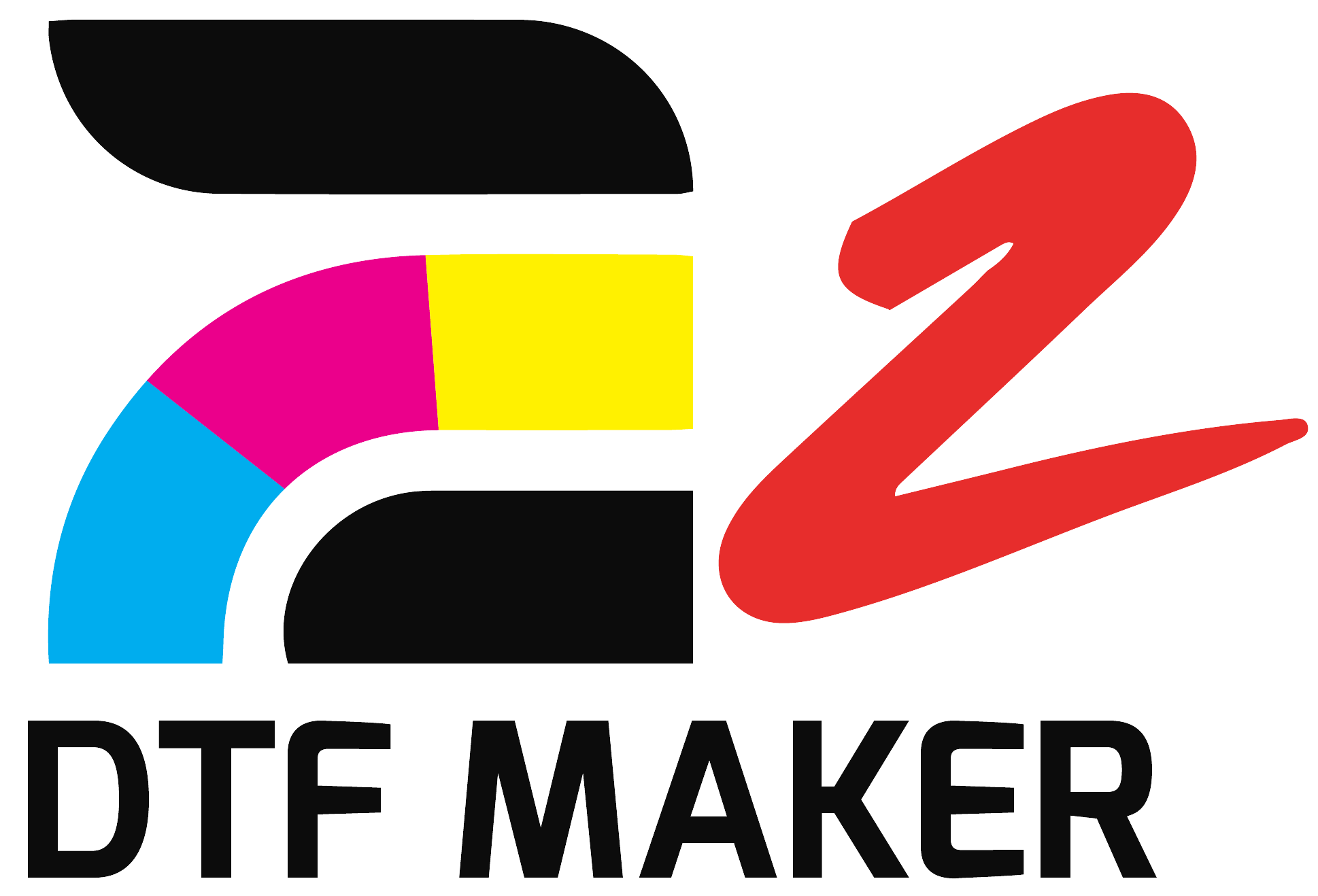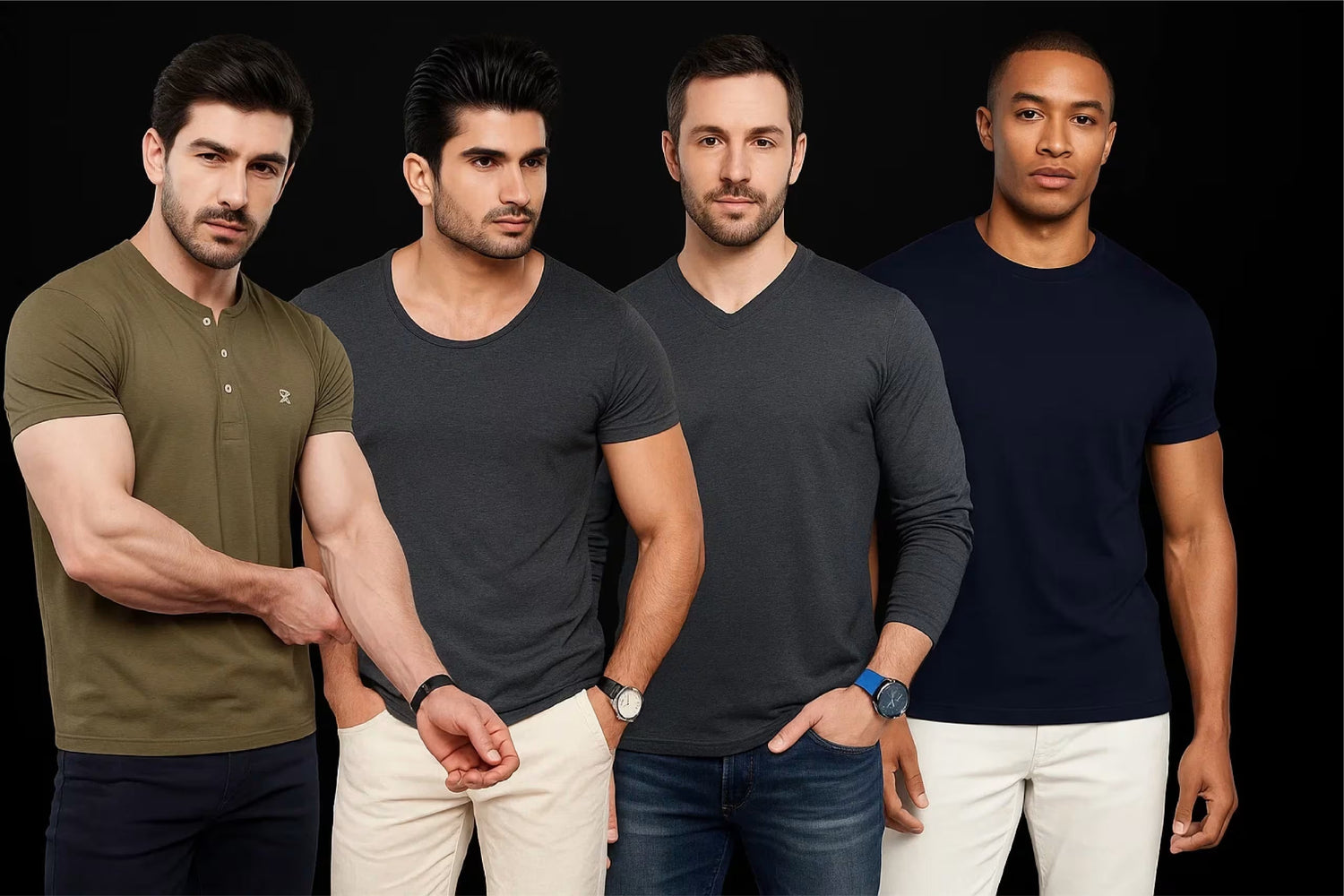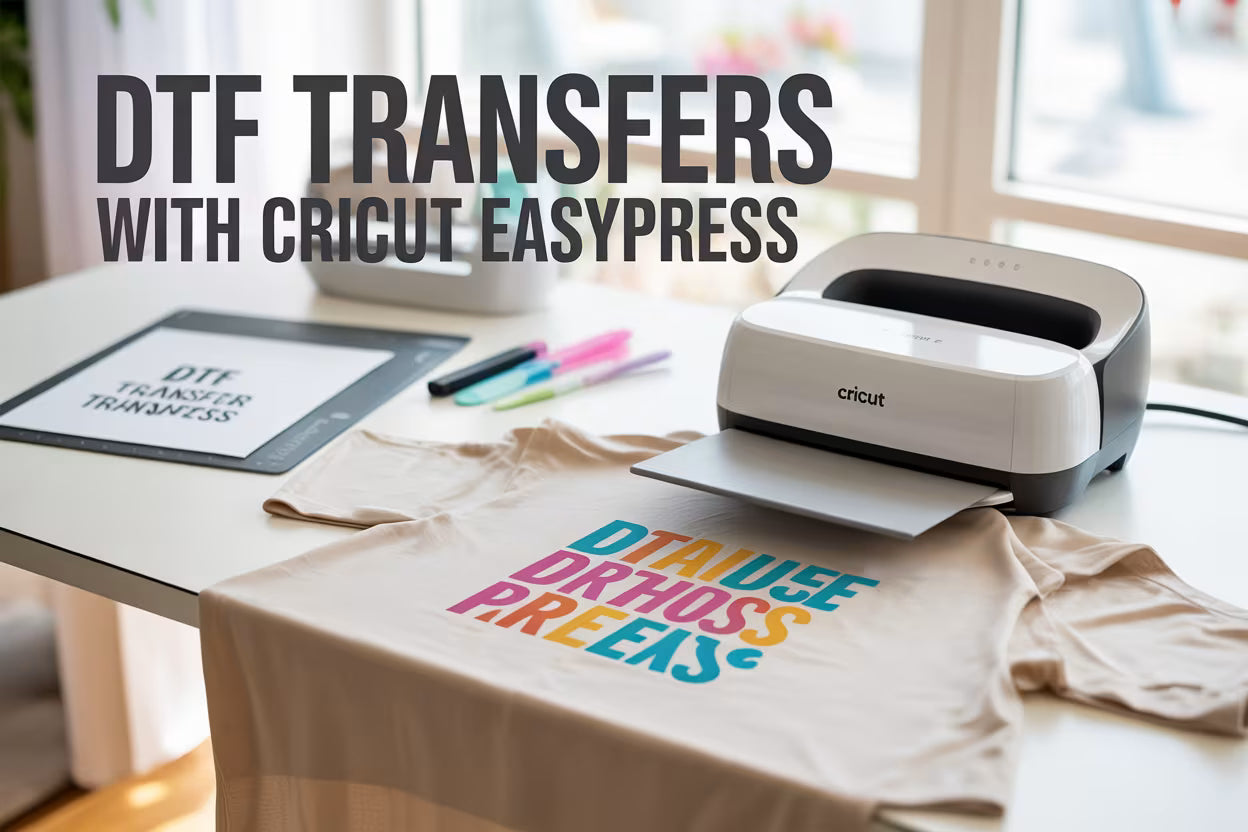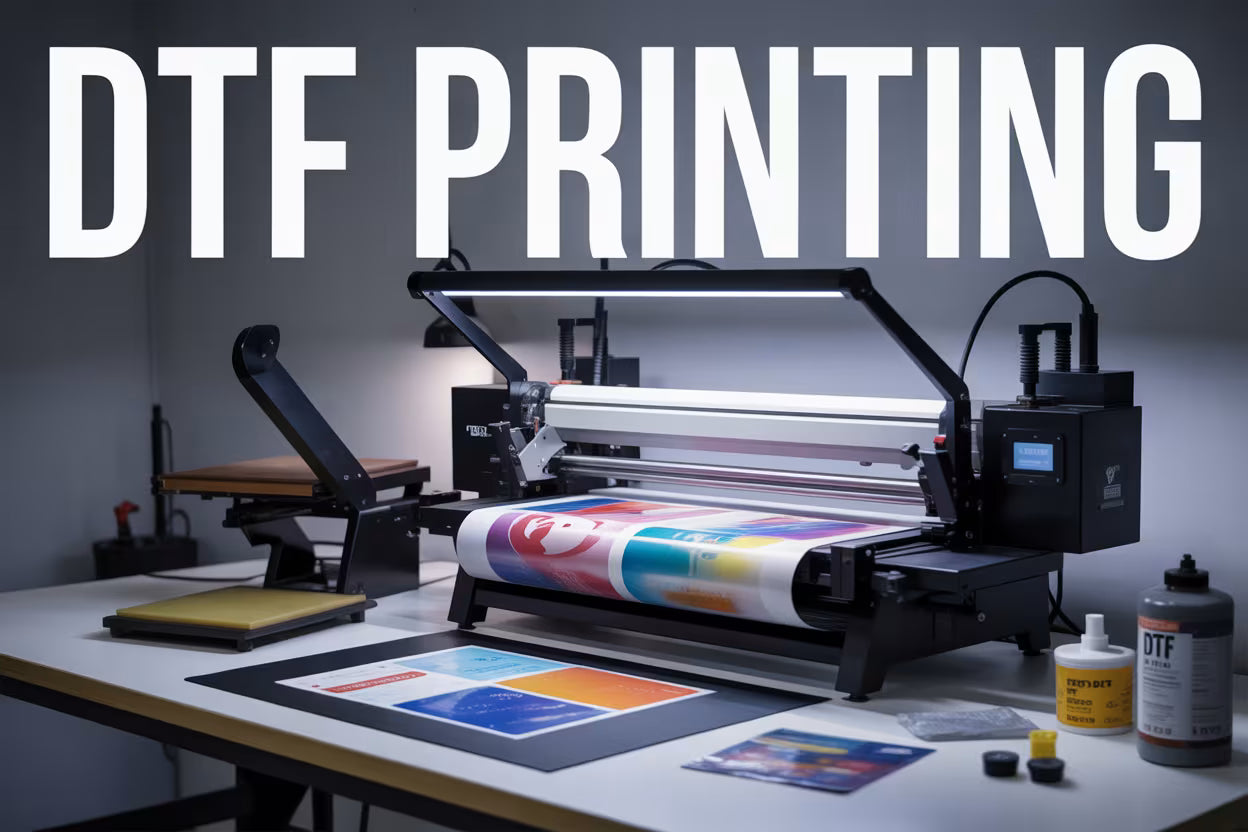Table of Contents
- Introduction
- Classic T-Shirt Styles for Printing
- Premium and Specialty T-Shirt Styles
- Modern and Trendy T-Shirt Styles
- Specialized Neckline Options
- Technical Considerations for Each Style
- Target Market Considerations
- Quality and Durability Factors
- Pricing and Profitability Analysis
- Practical Implementation Guide
- Trends and Future Considerations
- Conclusion and Best Practices

Introduction
When it comes to creating successful custom t-shirts, understanding different types of t-shirts and their neckline variations becomes crucial for any printing business. The right t-shirt style can make or break a design, affecting everything from visual appeal to customer satisfaction. This comprehensive guide explores how T-shirt necklines and various shirt styles impact the printing process and final results.
Custom apparel businesses need to consider multiple factors when selecting the best T-shirt for their projects. The shirt style directly influences print location options, design placement possibilities, and overall aesthetic appeal. Whether working with screen printing, DTG printing, or sublimation printing, each t-shirt style presents unique opportunities and challenges.
Understanding how different styles work with various printing techniques helps create better outcomes for both businesses and customers. From the classic crew neck T-shirt to trendy Oversized T-shirts, each style serves specific purposes and target audiences. This Ultimate Guide provides essential insights for making informed decisions about garment printing projects.
Classic T-Shirt Styles for Printing
Basic Crew Neck T-Shirts
The classic crew neck remains a popular choice for custom t-shirts across all demographics. This round neckline provides excellent surface area for front design placement, making it ideal for logos, text designs, and simple graphics. The chest area offers generous space for center chest placement, while the upper back accommodates larger designs effectively.
Crew neck T-shirts work exceptionally well with different types of printing methods. Screen printing achieves excellent results on these garments, while DTF Printing also produces high-quality outcomes. The Standard size options range from small to extra-large, ensuring proper fit for diverse customers.
When considering shirt size variations, the crew neck style maintains consistent proportions across all sizes. This reliability makes it perfect for bulk orders and corporate apparel projects. The shoulder seam placement remains stable, providing reliable reference points for design positioning.
V-Neck T-Shirts
V-neck T-shirts offer a distinctive alternative to traditional round neck styles. The V-shaped neckline creates unique design placement opportunities, though it also presents specific challenges. The chest area becomes more defined, requiring careful consideration of design positioning to maintain visual balance.
These shirts appeal particularly to customers seeking a touch of sophistication in their casual wear. The Deep V Neck variation from brands like Bella+Canvas provides even more dramatic styling options. However, designers must account for the reduced upper chest space when planning their layouts.
V-neck styles work well for both men's and women's apparel, though the neckline depth may vary between gender-specific cuts. This t-shirt style complements designs that don't require extensive upper chest coverage, making it suitable for smaller logos and text-based designs.
Scoop Neck T-Shirts
Scoop neck t-shirts provide a curved, wider neckline that offers unique aesthetic appeal. This shirt style typically targets female customers seeking a more feminine look in their custom apparel. The curved neckline creates interesting design opportunities while maintaining adequate space for front design placement.
The relaxed fit nature of many scoop neck styles provides comfortable wear while accommodating various body types. Print location options remain versatile, though designers should consider the neckline curve when planning their layouts. The overall design must complement the garment's natural lines to achieve the best results.
Premium and Specialty T-Shirt Styles
Henley Shirts
Henley t-shirts feature distinctive button plackets that add visual interest to the garment. These Henley T styles bridge the gap between casual and semi-formal wear, making them excellent choices for brand identity projects. The button placket area requires special consideration during the design process.
Long sleeves Henley variations offer additional surface area for sleeve print applications. However, the button area limits certain front design options, requiring creative solutions for optimal results. These shirts work particularly well for vintage-inspired designs and sophisticated branding applications.
The unique construction of Henley T-shirts makes them statement pieces that stand out from basic t-shirt styles. When working with intricate designs, the button placket can actually enhance the overall visual appeal by creating natural design boundaries.
Polo Shirts
Polo shirts represent a step up in formality while maintaining printability for custom applications. The collar area presents both opportunities and limitations for design placement. Left chest print positioning works exceptionally well on polo shirts, creating professional-looking results perfect for corporate branding.
These garments often feature chest pockets, which must be considered during the design planning phase. The pocket area can either complement the design or create obstacles, depending on the specific layout requirements. Sports teams frequently choose polo shirts for their professional appearance and durability.
The structured nature of polo shirts makes them ideal for business applications and formal events. When combined with quality printing techniques, they create impressive custom apparel that reflects well on brands and organizations. 
Raglan Sleeve T-Shirts
Raglan sleeve construction creates distinctive diagonal seam lines that extend from the neckline to the armpit. This design feature offers unique opportunities for multi-color designs and creative printing applications. The sleeve placement differs from traditional set-in sleeves, affecting design considerations.
Baseball-style raglan shirts often feature contrasting sleeve colors, creating natural opportunities for design coordination. The different styles available in raglan construction include both fitted and loose-fitting options, catering to various preferences and applications.
The continuous fabric construction from neck to sleeve provides interesting possibilities for designs that span across traditional seam boundaries. This makes raglan styles particularly suitable for bold statement designs and creative printing projects.
Modern and Trendy T-Shirt Styles
Oversized and Relaxed Fit T-Shirts
Oversized T-shirts have become increasingly popular among younger demographics seeking comfortable, fashion-forward options. The relaxed fit provides ample surface area for large designs and creative print placements. These styles work particularly well for full-front design applications and artistic expression projects.
The larger garment size requires careful consideration of design scaling to maintain proper proportions. What works on a standard fit shirt may need adjustment for oversized styles. The additional fabric area allows for more creative freedom in design placement and sizing.
Contemporary fashion trends favor these comfortable styles for both casual wear and fashion statements. The relaxed nature appeals to customers seeking comfort without sacrificing style, making them excellent choices for lifestyle brands and trendy applications.
Crop Tops and Fitted Styles
Crop Tops represent a specialized category targeting specific demographics and fashion preferences. These shorter garments require careful design placement due to limited surface area. The reduced length affects both front and back design options, requiring creative solutions for effective branding.
Fitted styles emphasize body contours, which can affect print appearance and durability. Stretch considerations become more important with form-fitting garments, as designs must accommodate fabric movement without distortion or cracking.
These styles work best with smaller designs and strategic placement options. The fashion-forward nature appeals to younger customers and trend-conscious buyers seeking unique custom apparel options.
Tank Tops and Sleeveless Options
Tank top styles provide excellent opportunities for summer-focused marketing and athletic applications. The sleeveless design offers unique print location possibilities, including side panel printing and expanded armhole designs. These garments work particularly well for fitness brands and summer promotions.
The armhole area requires special consideration during design planning, as the opening affects available print space and design boundaries. Upper back designs work exceptionally well on tank tops, providing excellent visibility and design impact.
Athletic and casual variations serve different market segments, from gym wear to beach apparel. The versatile nature of tank tops makes them suitable for various printing techniques and design applications
.
Specialized Neckline Options
Boat Neck (Bateau) T-Shirts
Boat Neck styles feature wide, horizontal necklines that create elegant, sophisticated appearances. This neckline style offers unique design opportunities, particularly for shoulder area printing and wide design layouts. The horizontal emphasis complements certain design types while challenging others.
The Boat Neck construction provides excellent opportunities for designs that benefit from wide, horizontal layouts. However, the limited vertical space in the chest area requires careful design planning. These styles work particularly well for fashion-forward applications and sophisticated branding.
The elegant styling appeals to customers seeking distinctive alternatives to traditional necklines. When paired with appropriate designs, Boat Neck shirts create memorable custom apparel that stands out in competitive markets.
Off-Shoulder Styles
Off-shoulder designs represent trendy, fashion-forward options that appeal to style-conscious customers. These garments require special consideration for design placement, as the shoulder exposure affects traditional placement areas. Creative solutions often involve strategic design positioning that complements the garment's unique styling.
The seasonal nature of off-shoulder styles makes them particularly suitable for spring and summer promotions. The fashion-forward appeal attracts customers seeking unique, Instagram-worthy custom apparel options.
Design placement challenges require creative thinking and careful planning to achieve optimal results. However, when executed properly, these styles create striking custom pieces that generate strong customer engagement and social media sharing.
High Neck and Mock Turtleneck
Mock Neck styles provide modern, minimalist appeal that works well with contemporary design aesthetics. The high neckline creates unique design challenges while offering sophisticated styling options. Limited design placement areas require strategic planning for optimal results.
High neck styles work particularly well for premium positioning and upscale custom apparel applications. The sophisticated appearance appeals to customers seeking elevated alternatives to traditional t-shirt styles.
The Mock Neck construction provides excellent opportunities for back design emphasis, as the front design space becomes more limited. This can actually enhance design impact by creating focal points and drawing attention to specific design elements.
Technical Considerations for Each Style
Fabric Composition Impact
Cotton t-shirts remain the gold standard for many printing applications, offering excellent print adhesion and durability. However, different fabric compositions affect printing techniques differently. Polyester blends may require specific printing approaches, while 100% cotton provides the most versatile printing options.
Stretch fabrics present unique challenges for design durability and appearance. The fabric composition directly affects how prints respond to washing, wearing, and stretching. Understanding these relationships helps ensure long-term customer satisfaction and product quality.
Blend ratios significantly impact printing technique selection and final results. What works perfectly on 100% cotton may require adjustment for 50/50 blends. This knowledge becomes crucial for maintaining consistent quality across different garment types.
Printing Method Compatibility
Screen printing remains highly compatible with most t-shirt styles, offering excellent durability and cost-effectiveness for larger orders. However, certain styles may present challenges for screen printing setup and execution. Understanding these limitations helps in making appropriate method selections.
DTF Printing technology provides excellent versatility across different t-shirt styles and fabric compositions. This newer technology offers solutions for complex designs and small batch orders that may not be cost-effective with traditional screen printing methods.
Each printing process has specific requirements and limitations that affect style selection decisions. Matching the right printing technique with appropriate garment styles ensures optimal results and customer satisfaction.
Design Placement Guidelines
Standard placement areas vary significantly between different t-shirt styles and necklines. Understanding these variations helps create more effective designs and prevents placement errors that could affect final results. Each style has optimal placement zones that maximize visual impact.
Safety margins become particularly important when working with different necklines and construction details. Proper margin planning prevents designs from interfering with seams, collars, and other garment features that could affect appearance or durability.
The printing process requirements also affect placement decisions, as different techniques may have specific spacing or positioning requirements. Coordinating these technical requirements with design goals ensures successful outcomes.
Target Market Considerations
Demographics and Style Preferences
Different age groups show distinct preferences for specific t-shirt styles and necklines. Younger customers often gravitate toward trendy styles like oversized fits and crop tops, while older demographics may prefer classic crew necks and polo shirts. Understanding these preferences helps in inventory planning and marketing strategies.
Personal preference plays a significant role in style selection, with some customers consistently choosing specific necklines and fits. Building relationships with repeat customers often involves understanding and accommodating these individual preferences.
The target audience for each project should influence style recommendations and inventory decisions. Corporate clients may require different options compared to fashion retailers or event organizers.
Industry-Specific Applications
Corporate apparel typically requires conservative, professional-looking styles that work well in business environments. Polo shirts and quality crew necks often serve these applications best, providing appropriate appearance while maintaining printability for branding purposes.
Fashion retail applications may require trendier styles and unique necklines that appeal to style-conscious consumers. These applications often benefit from specialty styles that create distinctive, memorable products.
Sports teams and athletic applications have specific requirements for durability, comfort, and performance. Tank tops and moisture-wicking fabrics often work best for these applications, though design placement may require special consideration.
Quality and Durability Factors
Garment Construction Quality
Seam strength directly affects the longevity of printed garments, particularly in high-stress areas around necklines and armholes. Quality construction ensures that prints maintain their appearance throughout the garment's useful life.
Neckline reinforcement varies between manufacturers and styles, affecting how well the garment maintains its shape over time. This becomes particularly important for styles with unique necklines that may be subject to stretching or distortion.
Pre-shrinking and dimensional stability help ensure that designs maintain proper positioning and appearance after washing. Understanding these factors helps in making appropriate style selections for different applications.
Print Durability by Style
Different t-shirt styles experience varying stress patterns during wear and washing. Understanding these patterns helps predict print longevity and make appropriate design and placement decisions.
Washing and care requirements may vary between styles, affecting long-term print appearance and durability. Providing appropriate care instructions helps customers maintain their custom apparel properly.
The overall design integration with garment style affects long-term appearance retention. Designs that work harmoniously with garment construction typically maintain better appearance over time.
Pricing and Profitability Analysis
Cost Considerations by Style
Basic crew neck styles typically offer the most cost-effective options for large volume orders, while specialty styles command premium pricing. Understanding these cost relationships helps in pricing strategies and profit margin planning.
Volume discounts often vary by style, with basic styles offering better bulk pricing compared to specialty or fashion-forward options. This affects project planning and customer pricing decisions.
Different styles may require varying amounts of setup time and labor, affecting overall project costs and pricing strategies.
Market Positioning
Budget-friendly options serve price-sensitive customers and high-volume applications, while premium styles target customers seeking unique or high-quality alternatives. Balancing these options helps serve diverse customer needs effectively.
Custom design complexity often correlates with style selection, as more sophisticated styles may justify more elaborate design work and higher pricing.
Practical Implementation Guide
Style Selection Process
Client consultation should include discussion of intended use, target audience, and personal preferences to guide appropriate style selection. This consultation process helps ensure customer satisfaction and project success.
Sample ordering allows customers to evaluate style options before committing to large orders. This step particularly benefits first-time customers who may be unfamiliar with different style options.
Inventory planning should consider popular styles while maintaining options for specialty requests. Balancing inventory helps serve customer needs while managing costs effectively.
Design Adaptation Techniques
Modifying designs for different necklines requires understanding how each style affects design placement and visual impact. This skill development enhances service capabilities and customer satisfaction.
Color coordination between designs and garment styles can significantly enhance final results. Understanding color relationships helps create more appealing custom apparel.
The printing process for proof creation should accurately represent final results, helping customers make informed decisions about style and design combinations.
Trends and Future Considerations
Emerging T-Shirt Styles
Sustainable and eco-friendly options are becoming increasingly important to environmentally conscious customers. These trends affect both style selection and printing technique choices.
Technology integration in garment design may introduce new printing opportunities and challenges. Staying informed about these developments helps maintain competitive advantage.
Customization trends continue evolving, with customers seeking increasingly personalized options. Understanding these trends helps anticipate future market demands.
Market Evolution
Consumer preferences continue shifting toward comfort and personal expression, affecting style popularity and inventory decisions. Monitoring these changes helps maintain relevant product offerings.
Seasonal trend cycles affect style demand patterns, with certain styles showing stronger performance during specific times of year. Understanding these patterns helps with inventory and marketing planning.
Innovation in printing technology compatibility continues expanding options for different styles and applications. Staying current with these developments enhances service capabilities.
Conclusion and Best Practices
Key Takeaways for Style Selection
Successful t-shirt printing businesses understand that style selection significantly impacts project outcomes and customer satisfaction. The best T-shirt for each project depends on multiple factors including intended use, target audience, design requirements, and budget considerations.
Matching customer needs with appropriate styles requires ongoing education and consultation skills. This process becomes easier with experience and understanding of how different styles serve various applications.
Quality assurance throughout the style selection and printing process helps maintain reputation and customer relationships. Attention to detail in style recommendations demonstrates professionalism and expertise.
Building a Successful T-Shirt Printing Business
Style diversity in inventory planning helps serve varied customer needs while maintaining efficient operations. Offering appropriate options without overextending inventory requires careful balance and market understanding.
Continuous learning about new styles, printing techniques, and market trends helps maintain competitive advantage and service quality. The custom apparel industry continues evolving, requiring ongoing adaptation.
Customer education about style options and their implications helps customers make better decisions and achieve more satisfactory results. This educational approach builds trust and encourages repeat business.
Apparel businesses that understand the relationship between style selection and printing success are better positioned to serve their customers effectively and build sustainable, profitable operations. This Complete Guide provides the foundation for making informed decisions about t-shirt styles and necklines for printing applications.
Explore More with EZT Mart & EZDTF Maker
At EZDTF Maker, we provide everything you need to bring your designs to life — from blank apparel to premium DTF and UV DTF printing supplies. Start with our apparel mart, then explore our full range of transfers, bundles, and materials.
🛍 Shop Apparel & Blanks
Begin your printing journey with high-quality apparel from our dedicated store:
👉 EZT Mart – Your destination for blank apparel, fashion basics, and accessories ready for customization.
Custom Transfers & Builders
Custom DTF Transfers by Size – Perfectly sized transfers for any project.
DTF Gang Sheet Builder – Combine multiple designs into one efficient sheet.
Upload Your Gang Sheets – Quick uploads for fast turnaround.
Holiday & Seasonal Transfers – Ready-to-press designs for special occasions.
UV DTF Gang Sheet Builder – Create vibrant and durable UV DTF stickers.
Bundles & Supplies
DTF Supplies Bundle | UV DTF Supplies Bundle – All-in-one solutions for your printing setup.
Premium DTF Ink | DTF TPU Powder | DTF Film Rolls – Reliable supplies for flawless results.
UV DTF Ink | Premium UV DTF Film – High-quality UV materials for lasting designs.
Try Before You Buy
Not sure yet? Experience our quality firsthand with a Free DTF Transfer Sample Pack.




Leave a comment
This site is protected by hCaptcha and the hCaptcha Privacy Policy and Terms of Service apply.